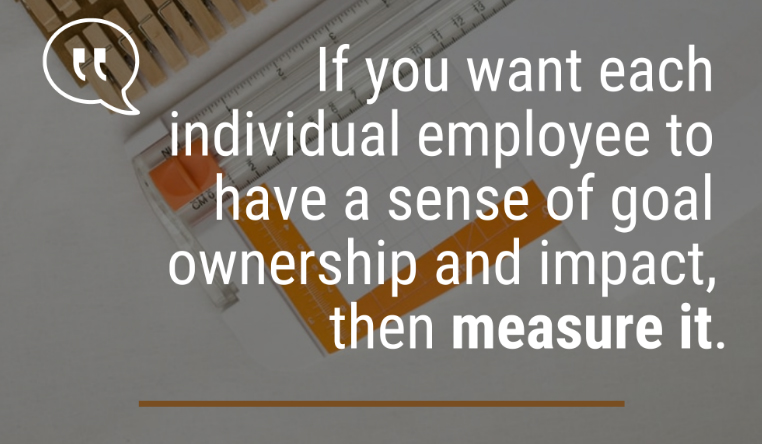
As a credit union leader, you’ve determined that proceeding with a merger is the best way to grow your financial institution. Perhaps you’ve even identified some potential merger partners. Now the question arises: How do you start the conversation?
Credit union executives contributed their insights on this topic in a three-part white paper from DDJ Myers, “More for Members: Credit Union Leaders Plan Post-Pandemic Merger & Acquisition Strategies.” Here are their five suggestions for getting the merger conversation started.
- Start by building trust. Often the trust-building process begins with conversations between CEOs, who seek to achieve a comfort level with each other and explore whether their cultures are compatible. Brandon Riechers, CEO, $3.5 billion Royal Credit Union, Eau Claire, Wisconsin, concedes that this process takes time. “Deals have been struck on first meetings, based on first impressions, but more often, they happen over the long term,” Riechers says.
- Lend a helping hand. In positioning $2.1 billion Pen Air Federal Credit Union, Pensacola, Florida, for merger discussions, “we have to first make ourselves known as good partners in the region,” says Board Chair Bob Jacobson. One of the ways Pen Air has done this is by supporting smaller financial cooperatives in the aftermath of hurricanes—for instance, through shared branch availability and a loan of the “bus,” its mobile ATM, to financial cooperatives with branches temporarily closed by a storm or other emergency. Pen Air also has offered to share staff and office supplies and to assist with food delivery to communities during natural disasters.
- Provide expertise and business support. One credit union accomplished this by establishing a CUSO to deliver commercial underwriting services to smaller financial cooperatives in its region, serving as a potential entry point for having conversations about a potential merger.
- Offer systems solutions. If member service and market challenges are steering credit unions toward entertaining merger offers, technology issues can firm up that decision, suggests Simon Walton, Board Chair of $2 billion USAlliance Federal Credit Union, Rye, New York. “If a credit union is locked into an old core system that can’t grow and take on additional volume, then you’re looking at a substantial investment to add scale to the organization.”
- Steer clear of “cold calls.” Rather than just calling a potential merger partner “out of the blue,” it’s best to have some form of pre-existing relationship first, several credit union leaders advise.
“If you’re the CEO of a potentially acquiring credit union and just pick up the phone and start dialing for mergers, people don’t really like that,” says Keith Sultemeier, CEO of $6 billion Kinecta Federal Credit Union, Manhattan Beach, California. “Usually, the leaders of the acquired credit union take the first step because they have the most risk.”
Click the link to download the three-part white paper, “More for Members: Credit Union Leaders Plan Post-Pandemic Merger & Acquisition Strategies.”

By Peter Myers, Senior Vice President, DDJ Myers, Ltd.
Employee engagement, satisfaction, and internal Net Promoter Scores are now common practices; even the NCUA is focused on increasing its employee engagement. As a consulting partner with a talent–management focus, we’re all in favor of organizations improving their cultures. “Culture eats strategy for breakfast,” right?
However, we’ve seen some organizations hyperfocus on tactical engagement steps as the ends and not the means. Hosting virtual team happy hours and passing out electronic food delivery cards are all great. But many execs view these as cultural busy-ness rather than lasting change.
In our many years of work with credit unions around the country, we’ve found a few lasting ideas and techniques that we share. We start by asking what we need to do to help the organization achieve its strategic objectives. And we believe that’s not just a question for the executives, but one for every member of the organization. Many teams get this wrong with staff surveys that ask for feedback without empowerment, which often leads to a long list of ideas or complaints. If you want each individual employee to have a sense of goal ownership and impact, then measure it. That’s easier said than done, but we have some ideas.
Read More >

… and how to avoid them.
Women make up the lion’s share—or should we say “lioness’s share”?—of membership at U.S. credit unions, but their representation on credit union boards is sorely lagging.
Recruiting more women to fill board positions is not just a matter of checking off a box. It needs to be done well, avoiding mistakes that could lead to tokenism rather than a good-faith effort to find the most qualified women who can contribute to good governance.
By being aware of some of the following mistakes, credit unions can take steps to avoid them.
Mistake #1: They under-recruit for women.
“It’s not new that females, who represent more than half of credit union membership nationwide, continue to be underrepresented in the boardroom,” says Nancy Herbert, Ph.D., who has served as a director for more than two dozen organizations, including two credit unions.
Herbert’s experience in credit unions led her to conduct extensive research on the topic of gender disparity on credit union boards en route to earning a doctorate in organizational development and leadership from Ashford University, San Diego.
“The glacier pace of incorporating gender diversity in our boardrooms precipitated my research about the underrepresentation of females on credit union boards,” Herbert reports. “A historic look at female representation on credit union boards nationwide showed a growth from 25% in 2005 to 36% in 2020, averaging less than 1% growth per year.”
Herbert derived these figures from two reports: Entrenched or Energetic? Improving Credit Union Board Renewal, co-authored by Antonio Spizzirri and Matt Fullbrook of the David and Sharon Johnston Centre for Corporate Governance Innovation at the Rotman School of Management, University of Toronto; and The State of Credit Union Governance, 2020, a joint project of the Johnston Centre, CUES strategic provider Quantum Governance L3C, Herndon, Virginia, and CUES.
A key conclusion of these two reports is that demographic diversity is an integral component of effective board governance, but with female board representation improving by just 3% in the past five years, Herbert notes, “we have not been very successful in moving the needle to address gender balance.”
To help boards develop strategies for greater success in this area, Herbert has launched The Boardroom Sage LLC, a coaching and consulting business in Longmont, Colorado, that focuses on gender diversity, board succession, board recruitment, leadership and team building.
While credit unions in the aggregate have underrepresentation of women in the boardroom, Herbert notes that some boards are bucking that trend with a majority of board seats—and in some cases, all seats—going to women.
A case in point is $180 million Guadalupe Credit Union in Santa Fe, New Mexico, which currently has four women on its five-member board. In fact, women have been in the majority on the board for the past 20 years.
“It helps that we have a CEO who is a woman (CUES member Winona Nava), and our upper management is also majority women,” says Linda Medina, board chair and the 2019 CUES Distinguished Director. “I think one of the reasons we have done so well in attracting women is because we have a culture that emphasizes family—not that men don’t value families, but it helps our credit union be more inclusive of women because of how family-oriented we are.”
One of the primary benefits of gender parity is that your board will have more diversity of opinions on topics that matter.
Ascend Federal Credit Union
CUES member Caren Gabriel, CEO of $2.6 billion Ascend Federal Credit Union in Tullahoma, Tennessee, enumerates various reasons to strive for more balanced representation of women on CU boards.
“One of the primary benefits of gender parity is that your board will have more diversity of opinions on topics that matter,” Gabriel says. “Women look at issues differently than men. For example, they can provide insight into how certain issues will resonate with young women, older women or single women who are the head of household. When you bring together different viewpoints, the board can make better, more informed decisions for the company and its strategy.”
Gabriel speaks from experience, given that she currently serves on the board of CUNA Mutual Group (a position that landed her on the list of WomenInc.’s 2019 Most Influential Corporate Board Directors).
Mistake #2: They lack a plan for recruiting women.
“Boards don’t need to achieve gender parity overnight,” Herbert says. “A best practice is to develop board succession planning with a focus on the future of the credit union.”
Credit union boards can use several strategies to accelerate their journey to gender parity. “One option that would allow you to fast-track that goal, if your bylaws permit, is to expand the number of members on your board,” Herbert observes.
Another option is to implement strategies that would encourage regular turnover of board members. Though this can be a touchy subject for some CUs, especially in situations where directors have served on the board continuously for decades, one strategy would be to implement term limits.
At Ascend CU, Gabriel reports that term limits have had a positive effect on recruitment because they “required our board to have a succession plan in place to identify and recruit new members who have a different background. There is a process to evaluate the skill sets of board members so they can provide the diversity of opinion our company needs to grow and thrive. Recruiting a person who you don’t know is not easy, but it’s necessary in order to have a high-performing board.”
Mistake #3: Their boards look for professional capital at the expense of social capital.
In her dissertation, Herbert addressed the issue of the deficit of “social capital,” citing 2015 research from Darlene Booth-Bell on the importance of gender diversity in governance as a means for achieving a desirable balance of professional and social capital.
“Professional capital describes the cumulative experiential and occupational expertise useful to the current or future needs of an organization,” Herbert says. “On the other side of the equation, social capital is made up of the demographic and cultural attributes that individuals bring to an organization, which includes gender, age, ethnicity, sexual orientation and geographic diversity that connects us to a variety of cultural and community networks.”
The underrepresentation of women skews the balance of social capital and member representation, Herbert notes. Thus, it’s important for boards to recruit candidates who can fill in these gaps.
Boards don’t need to achieve gender parity overnight. A best practice is to develop board succession planning with a focus on the future of the credit union.
Social capital also refers to so-called “soft skills,” encompassing such attributes as temperament, relatability and values. “Values are especially important because they help the board determine when considering individuals for board seats whether there’s a good cultural fit,” Herbert says. “A best practice is to strive to have diverse professional and social capital that will best serve the future needs of the credit union, and gender diversity is an essential part of that.”
With women well-represented on its board, Guadalupe CU has achieved a balance of professional and social capital. When recruiting new board members, the credit union looks for individuals who can help maintain that balance.
“We look for such things as enthusiasm and also if they have a specific talent in HR, IT or other areas in which we’re in need of expertise,” Medina explains.
Guadalupe CU maintains its social capital not only by recruiting women but also by recruiting young people. According to Medina, recruiting board members from among millennials and Gen-Xers helps ensure a continuing infusion of fresh ideas.
Mistake #4: They don’t conduct a broad enough search.
According to the Rotman report, credit unions mostly rely on word-of-mouth from current directors and staff to recruit board candidates and/or draw candidates from non-board committees. These recruitment practices typically lead to selecting new directors who are similar to incumbents. On boards that are mostly male, this hampers the movement toward greater gender diversity.
To aid in the quest for diversity, Herbert recommends that boards assess the types of professional and social capital that would best serve their credit unions and design a recruitment plan using that as a base. It is also possible to seek out a combination of diversity markers in board candidates, such as gender, age and ethnicity. “This mostly entails a shift from board members co-opting friends and colleagues to seeking out the specific attributes you need and knowing where to find them,” she says.
Gabriel says her board has done a lot of work on its director recruitment process. Beyond leveraging term limits, her directors “are thinking strategically and made a decision to move beyond finding new board members the old way—like asking people they know to find out if a friend or acquaintance would be interested in being a board member.”
At Guadalupe CU, recruitment of new board members focuses on values. “Basically what we’ve done is recruited from our partner organizations, because they have similar values,” Medina says. Among these partner organizations are Somos Un Pueblo Unido, a state-wide community organization working in support of the Hispanic community, and the New Mexico Association of Government Accountants, which serves professionals in the government financial community by providing quality education and fostering professional development.
Guadalupe CU also spreads the word about board openings through online advertising and direct contact with members during branch visits.
“The [member service representatives] will strike up a conversation and ask them if they would like to apply,” Medina reports.
In fact, it was through an in-branch conversation that Medina herself was recruited to serve as a credit union volunteer approximately 25 years ago.
To avoid pitfalls in recruiting, Deedee Myers, Ph.D., MSC, PCC, CEO of CUESolutions provider DDJ Myers Ltd., Phoenix, recommends that boards do not self-recruit but rather leave the search process to the experts.
“Insist on a diverse pool of candidates,” Myers advises. “Your search firm should already be in the practice of diversity, equity and inclusion.”
Be careful about making the most comfortable decision. Step into diversity.
Mistake #5: They make assumptions based on gender.
Stereotypical biases can creep into a selection process, but they need to be left at the door. Here are several assumptions that can trip up credit union boards, according to Myers:
- That a woman is unable to have a career and be a partner and/or mother. As Myers explains, “It is her choice and opportunity to step into her oneness, her power.”
- That the chair needs to be a woman because of the perception that a woman is more nurturing. “The role of the chair is vital to the performance of the board, and the best-qualified person needs to be in that role,” Myers says.
- That it’s OK to call board members “girls.” Myers stresses: “They are board members; use gender-neutral language.”
Myers recommends a number of steps for avoiding these biases, including bringing in subject matter experts who will help the board see its blind spots. It’s also important for boards to evaluate what questions they should ask a potential board member—even to the point that interview questions are vetted by a third party.
Myers further advises credit unions to schedule a rigorous annual board development workshop or seminar to elevate board performance. “Be careful about making the most comfortable decision,” she cautions. “Step into diversity.”
Mistake #6: They recruit one or two women rather than change their culture.
Recruiting women to join the board requires a true commitment to diversity. Herbert reports that credit unions need to ask: “Is your boardroom culture compatible with a diverse group of voices?”
Having one or two women on the board may not be sufficient to achieve a cultural change, Herbert adds. “To reach the most positive effects of gender diversity, it is gender balance, not simply a gender representation, that is key.”
Myers similarly stresses the need for achieving a transformative change in the organization. “Many boards are looking for a methodology to drive transformational change to be the highest-performing board possible. Invariably, the conversation leads to diversity, equity and inclusion throughout the boardroom, board practices, interpersonal board relationships, and the relationship [with] and oversight of the CEO.”
Achieving transformative change requires much more than implementing a new or revised board policy, Myers adds. “Transformative change includes a holistic, humanistic and dynamic organizing principle to bring about widening perspectives of seeing the whole person versus the color of skin, gender or sexual preference, for example. Unfortunately, when a board member intentionally or unintentionally crosses a line of subtle or not-so-subtle discrimination, too often the transgression goes unnoticed or is not corrected.”
Myers recommends that boards take the time to reflect on how their mindsets and perspectives could inappropriately influence outcomes as it pertains to recruitment. While acknowledging that reflection practices in boardrooms are not standard, she nonetheless encourages it as a means of assessing language and attitudes to encourage more openness toward those who offer diverse experiences and perspectives.
“Boards that practice self-reflection are better able to see people for their oneness, their own competencies and value to add to the board versus gender as the first filter,” Myers concludes. cues icon
Based in Missouri, Diane Franklin is a longtime contributor to Credit Union Management magazine.

Just when you thought you knew everything you needed to know about collaboration, communication, and culture…and then you didn’t. The current COVID-19 crisis is changing our lives and “workplaces” dramatically, and daily. With it comes new challenges, obstacles, and stress. How do you keep your business afloat and your members happy in this disordered world? More than ever, your people are your most important assets. Helping them work through distance, distress, and disarray is a leader’s top job today.
During this webinar NAFCU EVP and COO Anthony Demangone will be interviewing DDJ Myers SVP Peter Myers on what it takes to lead during a crisis.
Watch Here >

The opportunity is to shift the focus to being more practical and pragmatic and to implement a practice that accelerates strategic dialogue and boosts board/CEO alignment
Few board responsibilities have more potential for positive organizational impact than evaluating CEO performance. When done well, this process can generate ongoing powerful and meaningful conversations between directors and the chief executive and align them all in the same strategic direction.
In the Filene Institute report, “Tracking the Relationship Between Governance and Performance,” researchers concluded, “Of all the measured relationships, the only governance practice that yielded a strong positive correlation with actual ROA performance was whether boards felt they had an effective CEO evaluation in place.”
https://filene.org/learn-something/reports/governanceperformance
At the same time, many boards are uncomfortable conducting these performance reviews, and many CEOs are unhappy about the way they are done. There is typically minimal dialogue between the two parties and no clear direction to guide the CEO’s performance going forward. Both sides tend to see this process as a necessary—but not necessarily useful—exercise.
At the end of the day, the board-CEO relationship does not need another archaic construct or arduous process putting unnecessary strain on the conversation. The opportunity is to shift the focus to make these evaluations more practical and pragmatic and to implement a practice that accelerates strategic dialogue. The nine hallmarks of a strategically designed and utilized CEO performance evaluation include:
1. Reinforcing Strategic Priorities
First and foremost, the CEO performance evaluation should be viewed as a tool or an action item that further facilitates the manifestation of the strategic plan and its priorities. The process of identifying the characteristics and skill sets the CEO needs to lead the credit union stimulates rich conversations among directors. It provides a framework to align directors and the CEO behind these attributes and to guide discussions throughout the year.
2. Taking a Longer View of What Matters Most
Identifying those measurable key characteristics and solidifying the performance evaluation method should be designed to reach “evergreen” status. You don’t want to spend a lot of time and effort developing a survey and process that is relevant for this year but needs to be completely overhauled next year. This requires an upfront investment of time and commitment of energy by both the board and CEO to ensure the input and output rise to the level of significance to thrust alignment into the future.
3. Encouraging Continued Growth
The challenges and opportunities before your credit union are ever-changing, so the CEO will need to develop new skills and knowledge to keep pace. An effective evaluation process not only acknowledges but encourages the need for growth. The recognition that some capabilities will be a work in progress over several years gives the CEO permission to not be perfect and instead embrace a growth mindset and seek out developmental opportunities. This is in contrast to implying that a five out of five (or whatever scale you’re using) across the board is the expectation. Putting it another way, if your high-performing CEO receives an abundance of fives out of five, his or her first thought is likely, “Well, that feedback is not helpful.”
4. Talking Through the Basis for Evaluation
We recommend that the board plans a frank discussion of survey results before delivering the evaluation to the CEO. The objective is to uncover and get the alignment opportunities squared away so the board can speak with a unified voice once the evaluation is formally, and even informally, delivered.
For example, if most directors strongly agree that the CEO demonstrates a specific characteristic, but one or two board members strongly or even slightly disagree, that disparity presents an opportunity for at least one person to learn something. It may be that directors on one side of the issue or the other have information that is not universally known but should be shared. More than once we have witnessed a director acting on incomplete information, which shows up as a negative scoring on the CEO’s performance evaluation. Even in this occurrence, at least one person learns something. Again, the goal is reaching board alignment on the CEO’s past performance, providing a framework to guide his or her future performance.
Along the same lines, the board’s submission of the formal evaluation to the CEO should be followed up with a conversation in which the executive can ask clarifying questions. The directors and the chief executive can discuss at this meeting which characteristics are working very well and further understand any areas where there’s a significant difference between the board’s performance ratings and the CEO’s self-evaluation.
5. Incorporating a Management Component
The CEO could adapt the evaluation instrument for use with his or her executive team to gain additional performance feedback. We don’t see this happen often, but it can be an illuminating exercise if the managers and executives involved in this process believe that the CEO is open to and looking forward to honest feedback, learning and growing, and doing the right thing as a leader. Without a super duper foundation of trust already in place, this process will likely not produce useful input. It could do more harm than good if not proctored correctly.
6. Supporting Succession Planning and Executive Recruitment
In the five-year roadmap of best practices we recommend for the years leading up to the CEO’s planned retirement, the development of a robust evaluation methodology can help ease the transition for the next chief executive. Having a strategy-focused, high quality evaluation process is also a big selling point for high-caliber candidates as a sign that the board is committed to being in an ongoing partnership and accountability conversation (risk vs. rewards).
When boards don’t have an effective process in place during a change in leadership, that gap places an extra burden on the new CEO. Incoming executives have so much to do already that the need to co-develop a new evaluation system with the board (or likely do it on their own) may feel like throwing a bag of bricks to a person treading water. To say the least, it’s not helpful.
7. Revealing and Supporting Directors’ Perspectives
One of the most surprising elements of a comprehensive evaluation process is that when directors are assessing the CEO’s characteristics, they ultimately learn that their assessment is actually a reflection of themselves. Each director’s submitted opinion reflects what was retained in his or her mind or colored by his or her perspectives.
In our practice, we’ve witnessed a CEO doing X, the board witnessing X, and then six months later a director then negatively dings the CEO for not doing X. It just was forgotten. It happens. Conversely, if a single director’s evaluation calibration holds a lower or extremely high bar for success, that’s likely a reflection of the director as a person. You’ve heard it before, “I never give someone a five out of five as a matter of principle.” The point being, make sure that everyone is on the same page about the methodology. This is an important process, and directors should be conscious of how and why their opinions have been formed.
8. Acknowledging That ‘Learning’ and ‘Action’ Are the Operative Words
Learning only occurs when a relatively permanent shift takes hold and produces new actions. Providing examples of historic and desired future learnings and actions allow CEOs to understand what to do with the historic evaluation and cognitively situate themselves in the future. This may sound like, “The general themes of the CEO’s performance and requests for future action include the following… .”
9. Facilitating a Stronger Board-CEO Partnership
In short, an effective evaluation methodology is not a once-a-year assignment but an organizing system to guide ongoing interactions between the board and chief executive. A well-designed and executed evaluation process guides the coordination of elements throughout the year, both for the board and the CEO. Applying a strategic level of intentionality paves a smoother path for improved performance across the credit union and for serving the members–which, of course, is what the work of the board and CEO is all about.
Apply It to Your Boardroom
- What do you like about your board’s current CEO evaluation process?
- What does your CEO like about your board’s current CEO evaluation process?
- Which of the nine hallmarks outlined in this article might help your board do a better job of strategically evaluating your CEO?









